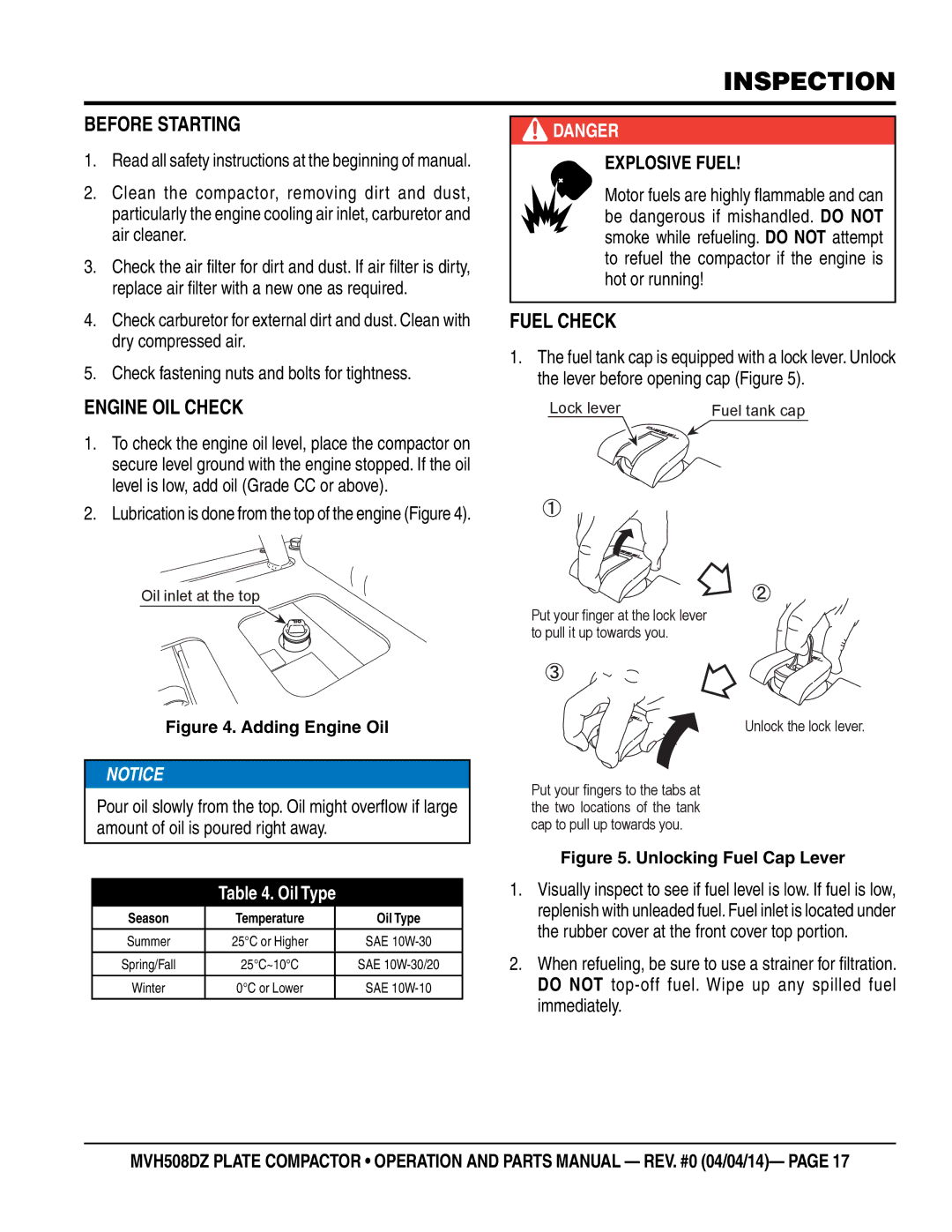
INSPECTION
BEFORE STARTING
1.Read all safety instructions at the beginning of manual.
2.Clean the compactor, removing dirt and dust, particularly the engine cooling air inlet, carburetor and air cleaner.
3.Check the air filter for dirt and dust. If air filter is dirty, replace air filter with a new one as required.
4.Check carburetor for external dirt and dust. Clean with dry compressed air.
5.Check fastening nuts and bolts for tightness.
ENGINE OIL CHECK
1.To check the engine oil level, place the compactor on secure level ground with the engine stopped. If the oil level is low, add oil (Grade CC or above).
2.Lubrication is done from the top of the engine (Figure 4).
Oil inlet at the top
Figure 4. Adding Engine Oil
![]()
![]() NOTICE
NOTICE
Pour oil slowly from the top. Oil might overflow if large amount of oil is poured right away.
Table 4. Oil Type
Season | Temperature | Oil Type |
|
|
|
Summer | 25°C or Higher | SAE |
|
|
|
Spring/Fall | 25°C~10°C | SAE |
|
|
|
Winter | 0°C or Lower | SAE |
![]() DANGER
DANGER
EXPLOSIVE FUEL!
Motor fuels are highly flammable and can be dangerous if mishandled. DO NOT smoke while refueling. DO NOT attempt to refuel the compactor if the engine is hot or running!
FUEL CHECK
1.The fuel tank cap is equipped with a lock lever. Unlock the lever before opening cap (Figure 5).
Lock lever | Fuel tank cap |
Put your finger at the lock lever to pull it up towards you.
Unlock the lock lever.
Put your fingers to the tabs at the two locations of the tank cap to pull up towards you.
Figure 5. Unlocking Fuel Cap Lever
1.Visually inspect to see if fuel level is low. If fuel is low, replenish with unleaded fuel. Fuel inlet is located under the rubber cover at the front cover top portion.
2.When refueling, be sure to use a strainer for filtration. DO NOT
MVH508DZ PLATE COMPACTOR • OPERATION AND PARTS MANUAL — REV. #0 (04/04/14)— PAGE 17
